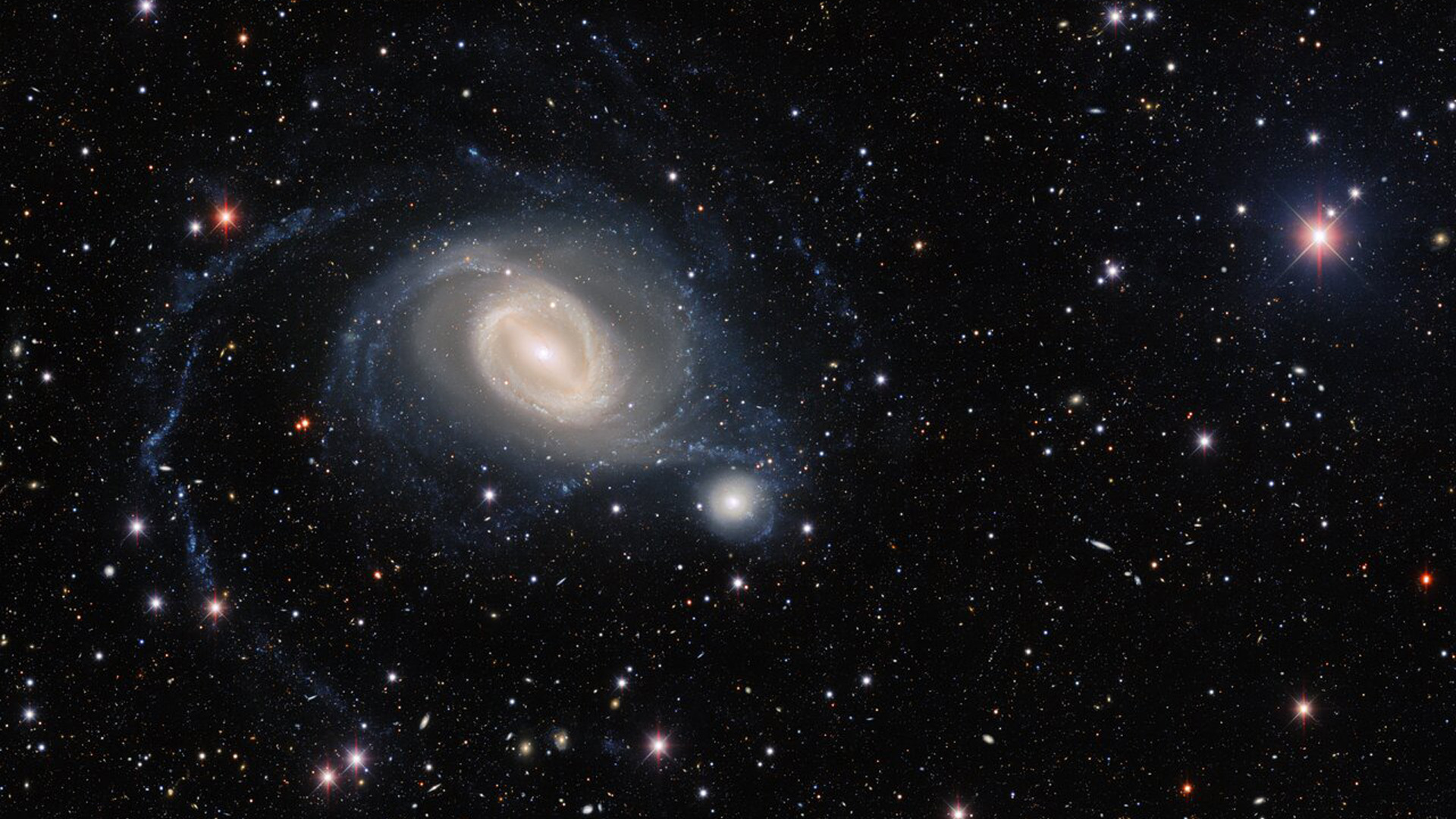Dark Energy Camera spies 'galactic ballet' of galaxies in stunning space photo
One of the most powerful cameras in the world just photographed two distant galaxies entwined in what's been described as a "galactic ballet."
Part of the National Science Foundation's (NSF) National Optical-Infrared Astronomy Research Laboratory (NOIRLab), the Dark Energy Camera on the Víctor M. Blanco 4-meter Telescope at Cerro Tololo Inter-American Observatory in Chile trained its lenses on the Horologium constellation some 60 million light-years from Earth. There, it captured an image of galaxies NGC 1512 and NGC 1510, which are ensnared in each other's gravitational pull.
In photos: The best Hubble Space Telescope images of all time!
NGC 1512 is a barred spiral galaxy not dissimilar to our own Milky Way, while NCG 1510 is far smaller — a dwarf galaxy. The two have been circling one another for some 400 million years, their shapes warping with each pass.
The Dark Energy Camera that photographed the galaxies is one of the most powerful wide-field imaging instruments on the planet. It has a 13-foot-wide (four-meter-wide) mirror and a 3.3-foot (one-meter-wide) corrective lens — one of five lenses on the device.
The Dark Energy Camera was originally built to complete the Dark Energy Survey, a mission run by the U.S. Department of Energy’s Fermi National Accelerator Laboratory. More than 400 scientists from seven countries participated in the survey, which imaged some 300 million galaxies between 2013 to 2019, with the goal of studying enigmatic dark energy.
Though that mission has ended, scientists still use the Dark Energy Camera to image distant galaxies, including NGC 1512 and NGC 1510. When the two galaxies' dance is complete — which won't be any time soon — NGC 1512 will consume its smaller companion to create a new, merged galaxy.
Breaking space news, the latest updates on rocket launches, skywatching events and more!
Follow us on Twitter @Spacedotcom and on Facebook.

Space.com contributing writer Stefanie Waldek is a self-taught space nerd and aviation geek who is passionate about all things spaceflight and astronomy. With a background in travel and design journalism, as well as a Bachelor of Arts degree from New York University, she specializes in the budding space tourism industry and Earth-based astrotourism. In her free time, you can find her watching rocket launches or looking up at the stars, wondering what is out there. Learn more about her work at www.stefaniewaldek.com.


